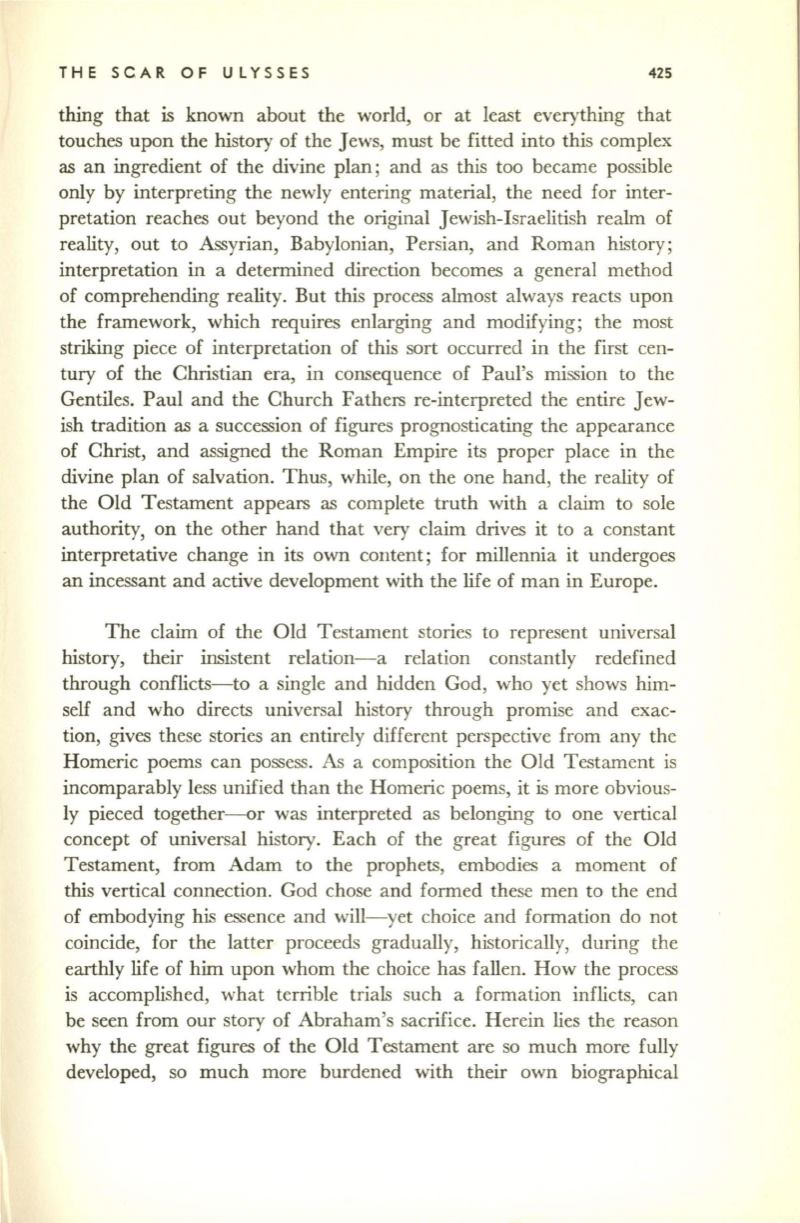
THE SCAR OF ULYSSES
425
thing that
is
known about the world, or at least everything that
touches upon the history of the Jews, must be fitted into this complex
as an ingredient of the divine plan; and as this too became possible
only by interpreting the newly entering material, the need for inter–
pretation reaches out beyond the original Jewish-Israelitish realm of
reality, out to Assyrian, Babylonian, Persian, and Roman history;
interpretation in a determined direction becomes a general method
of comprehending reality. But this process almost always reacts upon
the framework, which requires enlarging and modifying; the most
striking piece of interpretation of this sort occurred in the first cen–
tury of the Christian era, in consequence of Paul's mission to the
Gentiles. Paul and the Church Fathers re-interpreted the entire Jew–
ish tradition .as a succession of figures prognosticating the appearance
of Christ, and assigned the Roman Empire its proper place in the
divine plan of salvation. Thus, while, on the one hand, the reality of
the Old Testament appears as complete truth with a claim to sole
authority, on the other hand that very claim drives it to a constant
interpretative change in its own content; for millennia it undergoes
an incessant and active development with the life of man in Europe.
The claim of the Old Testament stories to represent universal
history, their insistent relation- a relation constantly redefined
through conflicts-to a single and hidden God, who yet shows him–
self and who directs universal history through promise and exac–
tion, gives these stories an entirely different perspective from any the
Homeric poems can possess. As a composition the Old Testament is
incomparably less unified than the Homeric poems, it
is
more obvious–
ly pieced together--or was interpreted as belonging to one vertical
concept of universal history. Each of the great figures of the Old
Testament, from Adam to the prophets, embodies a moment of
this vertical connection. God chose and formed these men to the end
of embodying his essence and will-yet choice and formation do not
coincide, for the latter proceeds gradually, historically, during the
earthly life of him upon whom the choice has fallen. How the process
is accomplished, what terrible trials such a formation inflicts, can
be seen from our story of Abraham's sacrifice. Herein lies the reason
why the great figures of the Old Testament are so much more fully
developed, so much more burdened with their own biographical


